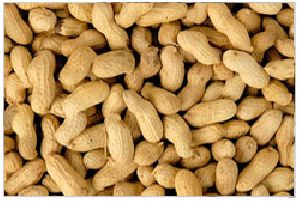
Java Peanuts
110 - 115 Per kg
20 Metric Ton (MOQ)

W240 Cashew Nuts
600 Per Kilogram
250 Kilogram (MOQ)
Best Deals from Edible Nuts

watermelon kernel
Get Price Quote
20000 8 (MOQ)

Gond Supari
550 Per Kilogram
50 Kilogram (MOQ)

Raw Cashew Nut
90 Per Kilogram
25 Ton (MOQ)

Groundnut
Get Price Quote
We are known as an eminent Groundnut Manufacturer, Exporter & Supplier from India. The Groundnut is available with us in two commercial varieties which include Indian HPS Groundnut Kernel – Bold and Indian HPS Groundnut Kernel – Java. One of the major uses of Groundnuts is to extract edible oil. Goodness of proteins and higher oil content has made Groundnuts an important agro product. Varieties Available Indian HPS Groundnut Kernel - Java 38/42, 50/55, 60/70, 70/80 Moisture - 7% - 8% Indian HPS Groundnut Kernel - Bold 50/55, 60/70, 70/80, 80/90 Moisture - 7% - 8% HistoryGroundnut-or peanut as it is also called-is a four-foliate legume with yellow sessile flowers and subterranean fruits. Native to South America, it originated between southern Bolivia and northern Argentina from where it spread throughout the New World as Spanish explorers discovered its versatility. Today, farmers in Asia and Africa also cultivate it. It is grown under a wide range of environmental conditions in areas between 40 degrees South and 40 degrees North of the equator. Uses The main use of groundnut is as a source of edible oil, but the high oil and protein contents also make it an important food crop. Growth Habits In trade, the bold-seeded types are referred to as Virginia, the small seeded as Spanish, and a third type Runner is also recognized. The flowers are born in the axils of the leaves mostly near the base of plant and have generally yellow petals. It is a self pollinated crop. After fertilization stalk of ovary elongates and forms peg which contains fertilized ovules at the tip. The growth of peg is positively geotropic until it penetrates soil to some depth (7 cm). The tip then becomes diageotropic and ovary starts developing into a fruit called pod which contains seeds. Generally it takes about 60 days from fertilization to full pod maturity.Climate The ideal growing conditions for groundnut are well-drained, light colored, loose friable, sandy loam soil, availability of optimum moisture in pod zone, and an optimum mean daily temperature of about 30 0C. It can be grown either as a sole crop or in combination with other crops in inter or mixed cropping. Early leaf spot, late leaf spot, rust, and Sclerotium rolfsi among fungal diseases; bud necrosis virus, tomato spotted wilt virus, peanut stripe virus, and rosette among virus diseases; and jassids, thrips, termites, leaf miner, Spodoptera, and white grub among insect pests, and aflatoxin contamination are important biotic factors. Among abiotic stresses drought, low pH, and low temperatures are important. These occur in various combinations in Asia, Africa, And Americas. New Crop : MARCH-APRIL & OCTOBER-NOVEMBER

groundnut kernels seeds
Get Price Quote
Commercial Varieties : We can offer you the following varieties Name Variations Indian HPS Groundnut Kernel - Java 38/42, 50/55, 60/70, 70/80 (Moisture - 7% - 8%) Indian HPS Groundnut Kernel - Bold 50/55, 60/70, 70/80, 80/90 (Moisture - 7% - 8%)

Peanut Kernels
Get Price Quote
Delectable taste, safe packaging and longer shelf life make our Peanut Kernels the preferred choice among customers. We are an unsurpassed Manufacturer, Supplier and Exporter of Peanut Kernels from Rajasthan. To ensure that only finest quality Peanut Kernels reach the customers, special care is taken about the processing and packaging. Owing to our brilliant logistics network, we are capable of delivering bulk orders of the Peanut within stipulated time.

Peanut
Get Price Quote
Bold and Java all counts available for export purpose only. New crop on board available for export.

cashew nuts
Get Price Quote

Pine Nuts
Get Price Quote
Methi Dana Get Latest Price

cashew nuts
Get Price Quote
We bring forth fresh Cashew Nuts for the clients. Cashew Nuts are widely used as an ingredient in different kinds of deserts and are offered by us in unbroken form, free from any damage. Our Cashew Nuts are rich in taste and therefore appreciated by consumers in India and abroad. We offer the Cashew Nuts in optimum packaging to assure their safe transportation and delivery. Moreover, we can also offer the Cashew Nuts in bulk, if desired by the clients.

Peanut Seeds
Get Price Quote
Cumine Seed, Guar Seed

kaju
Get Price Quote

Groundnut Kernels
Get Price Quote
Corinder seeds

Groundnut
Get Price Quote
Good Packaging, Cumine Seed

peanuts
Get Price Quote

burzil walnuts
Get Price Quote
burzil walnuts, gatinais saffron, alicante saffron, wont walnuts

scented betel nuts
Get Price Quote
jaljira, scented fennel seeds, digestive tablets, churans

scented betel nuts
Get Price Quote
Sweet Amla, scented fennel seeds, digestive tablets, churan